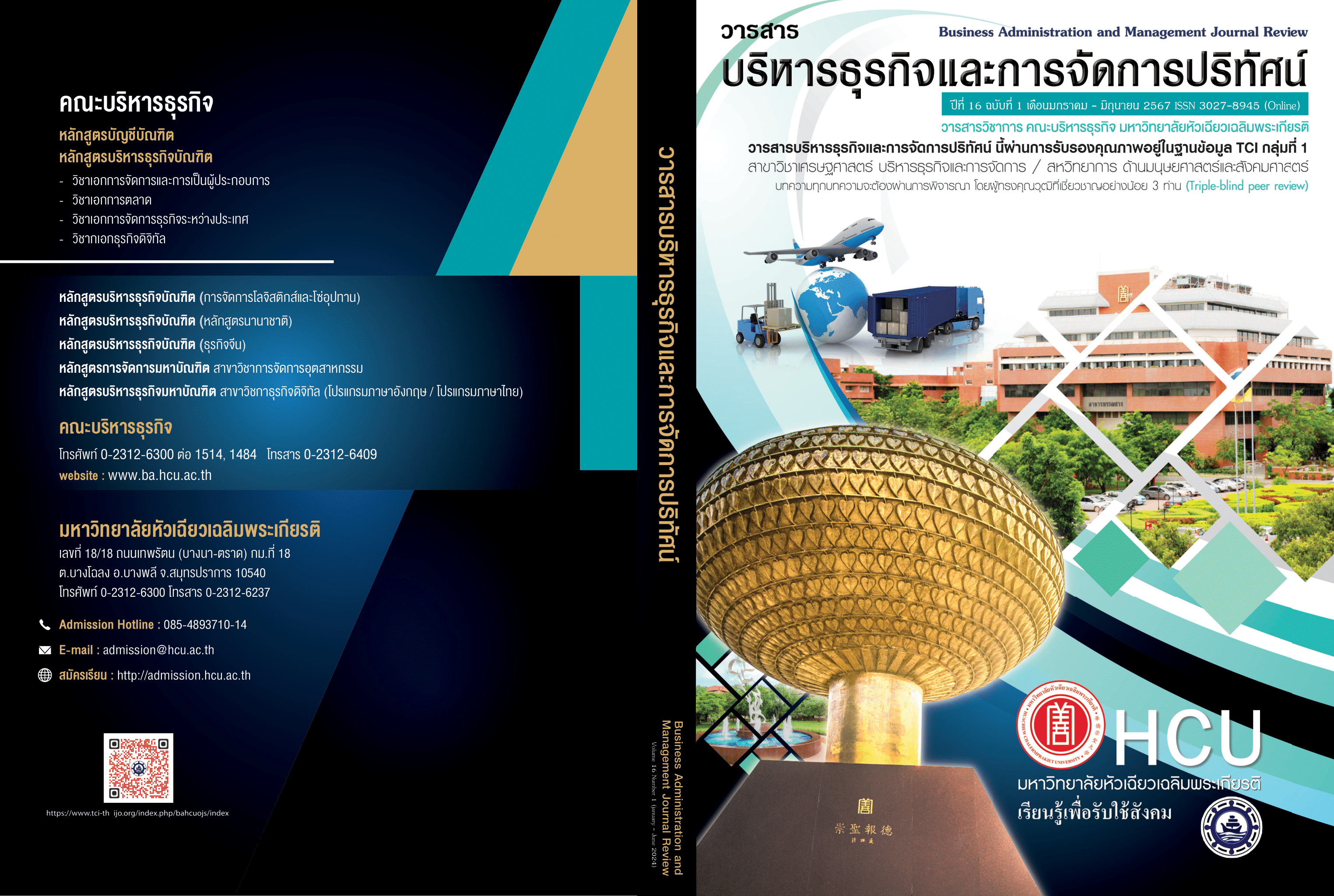Comparative Study on The Experiences of the Inclusive and Precise Poverty Alleviation in People’s Republic of China and the Comprehensive and Precise Poverty Alleviation in Thailand
Keywords:
Poverty Alleviation, targeted poverty alleviation, Comprehensive and Precise Poverty Alleviation, Poverty redemption model, China Poverty AlleviationAbstract
The People’s Republic of China (PRC) has achieved remarkable succeed at eradicating poverty with targeted poverty alleviation approach in 2020. This research project has objective to study on poverty redemption of PRC, to search for the use of science, technology and innovation for poverty redemption of PRC that could be applied to Thai poverty alleviation. Research sites for the study were Guangxi-Zhuang Autonomous Region with three provinces—Baise, Guilin and Yulin—were purposive sampling as research samples. The results of the study showed that the Targeted Poverty Alleviation of PRC has focused on poor household approval and targeted poverty reduction with comprehensive poverty redemption projects that have been focused on industrial production approach and modern trade and strategy of four lateral party collaboration including government, educational institutes, communities, and private sector, to transfer technologies and innovation to production systems of the poor, to build the capacity of the poor and to push them to value chain.
References
กรมส่งเสริมการค้าระหว่างประเทศ. (2560). Factsheet สาธารณรัฐประชาชนจีน. สืบค้นเมื่อ 27 สิงหาคม 2566, จาก https://www.ditp.go.th/contents_attach/220366/220366.pdf.
เจี้ย หยาง, กีรติพร จุฑาวิริยะ และจักรพันธ์ เกตุชุมแสง. (2560). พลวัตด้านนโยบายการท่องเที่ยวของรัฐบาลจีน. 13th International Conference on Humanities & Social Sciences 2017, 2055-2068.
ธีรพล สุวรรณรุ่งเรือง และคณะ. (2565). โครงการขยายผลการพัฒนาระบบสนับสนุนการทำงานเชิงพื้นที่เพื่อการแก้ไขปัญหาความยากจนแบบเบ็ดเสร็จและแม่นยำ. รายงานวิจัยฉบับสมบูรณ์. มูลนิธิเพื่อการพัฒนาเชิงพื้นที่.
พสุภา ชินวรโสภาค. (2564). ที่มาของการแก้ปัญหาความยากจนของจีน. วิทย์ไมตรีไทย-จีน, (มกราคม 2564). 6-14.
ไพจิตร วิบูลย์ธนสาร. (2564). เมื่อมังกรหลุดพ้นจากความยากจน. ศูนย์วิจัยยุทธศาสตร์ไทย-จีน, สำนักงานการวิจัยแห่งชาติ.
แมน ปุโรทกานนท์ และคณะ. (2565). โครงการพัฒนาระบบสนับสนุนการทำงานเชิงพื้นที่เพื่อการแก้ไขปัญหาความยากจนแบบเบ็ดเสร็จและแม่นยำระยะที่ 2. รายงานวิจัยฉบับสมบูรณ์. มูลนิธิเพื่อการบริหารจัดการน้ำแบบบูรณาการ (ประเทศไทย).
ลี ซินฮอง, รัดเกล้า เปรมประสิทธิ์ม ฟ้ารุ่ง มีอุดร และนพรัตน์ รัตนประทุม. (2565). ถอดบทเรียนความสำเร็จของนยายแก้ไขปัญหาความยากจนในชนบทของจีน. วารสารเศรษฐศาสตร์และกลยุทธ์การจัดการ, 9(1). 230-248.
ศูนย์ข้อมูลธุรกิจไทย-จีน. (10 มกราคม 2563). โมเดลรัฐร่วมเอกชน: กุ้ยโจวดึงจุดแข็งทรัพยากรท้องถิ่นดึงคนพ้นความยากจน. THAIBIZCHINA.COM. สืบค้นเมื่อ 1 พฤศจิกายน 2565, จาก https://thaibizchina.com. article/โมเดลรัฐร่วมเอกชน-กุ้ย-2.
สำนักงานสภาพัฒนาการเศรษฐกิจและสังคมแห่งชาติ. (2565). รายงานวิเคราะหฺสถานการณ์ความยากจนและความเหลื่อมล้ำของประเทศไทย ปี 2564. กรุงเทพมหานคร: สำนักงานสภาพัฒนาการเศรษฐกิจและสังคมแห่งชาติ.
สำนักงานสภาพัฒนาการเศรษฐกิจและสังคมแห่งชาติ. (ม.ป.ป.). สรุปวิวัฒนาการของแผนพัฒนาเศรษฐกิจและสังคมแห่งชาติฉบับที่1-13. สืบค้นเมื่อ 15 สิงหาคม 2565, จากhttps://www.nesdc.go.th/article_attach/article_file_20191018111514.pdf.
หวัง เต้าหมิง และวราวุฒิ เรือนคำ. (2564). วิเคราะห์แนวคิดนโยบายลดความยากจนของประธานาธิบดี สี จิ้นผิง. วารสารสุทธิปริทัศน์, 35(3). 249-270.
Action for Enterprise. (2013). A short guide to pro-poor value chain program design. Arlington. VA, USA.
Guo, B. (2022). Decoding the Rising of Chinese Internet Firms. เอกสารประกอบการอบรมออนไลน์ เรื่อง Enterprise Transformation in Digital Era. สถาบันผู้นำไทย-จีน, มหาวิทยาลัยหัวเฉียวเฉลิมพระเกียรติ.
GTZ. (2007). Value links manual, The methodology of value chain promotion. GTZ.
Krantz, L. (2001). The sustainable livelihood approach to poverty reduction, An introduction. Sweden: Sida
Lin, J.Y., and Yu, M. (2011). Industrial structural upgrading and poverty reduction in China. In China’s Statistical Yearbook 2011.
Mai, Q, Zhen, F. (2021). 旅游电商理念下乡村旅游与精准扶贫的融合模式研究, [การศึกษารูปแบบการบูรณาการการท่องเที่ยวชุมชนและการแก้ปัญหาความยากจนแบบมตรงเป้าภายใต้แนวคิดอีคอมเมิร์ซการท่องเที่ยว]. วารสารมหาวิทยาลัยวิทยาศาสตร์และเทคโนโลยีการเกษตรจี๋หลิน, 5(30 ตุลาคม 2564).
Pinduoduo. (2022). Corporate Social Responsibility. Retrieved 24 April 2023, from https://en.pinduoduo.com/responsibility.
UNDP. (2017). Guidance Note: Application of the Sustainable Livelihoods Framework in Development Projects. UNDP.
UNIDO. (2011). Pro-poor Value Chain Development: 25 guiding questions for designing and implementing agroindustry projects. United Nations Industrial Development Organization (UNIDO). Vienna, Austria.
World Bank. (2023). Poverty and Inequality Platform (version 20230328_2017_01_02_PROD) [data set]. pip.worldbank.org. Accessed on 2023-08-19
Wu, X. (2022). Data tech driven inclusive innovation. เอกสารประกอบการอบรมออนไลน์ เรื่อง Enterprise Transformation in Digital Era. สถาบันผู้นำไทย-จีน, มหาวิทยาลัยหัวเฉียวเฉลิมพระเกียรติ.
Downloads
Published
How to Cite
Issue
Section
License
Copyright (c) 2024 Business Administration and Management Journal Review

This work is licensed under a Creative Commons Attribution-NonCommercial-NoDerivatives 4.0 International License.
All articles published in the Business Administration and Management Journal Review are copyrighted by the journal.
The views and opinions expressed in each article are solely those of the individual authors and do not represent those of Huachiew Chalermprakiet University or any other faculty members. Each author is fully responsible for the content of their own article. Any errors or issues found are the sole responsibility of the respective author.




